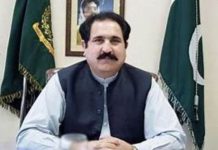ISLAMABAD, JUL 22 (DNA) — The Speakers at a panel discussion underscored that Pakistan is facing an overall increase of 38 percent in energy prices along with a 62 percent rise in capacity charges leading to tariff hikes in the country that could be overcome through an independent power consumer model promoting individual power generation.
The Sustainable Development Policy Institute (SDPI), as part of its Monday Seminar series, under the auspices of the Network for Clean Energy Transition (NCET) conducted a panel discussion on “Pakistan’s Electricity Tariff Structure: Insights and Key Determinants” here at the SDPI conference hall.
Dr. Khalid Waleed, Research Fellow at SDPI, detailed Pakistan’s consumer categories and tariff-setting mechanisms, highlighting how the tariff structure is designed to reflect various consumer types and usage patterns. Residential consumers, classified under category A-1, make up 89% of the consumer base and account for 48% of the total consumption.
This trend is opposite to the global pattern where industries are the main consumers of electricity. In Pakistan, however, commercial consumers (A-2) represent 9% of the consumers and 7% of the consumption. He further explained the mechanism behind the high electricity bills. In Pakistan, the capacity charge, encompassing fixed operational and maintenance costs, return on equity, debt servicing, insurance, working capital financing fees, and procurement and construction costs, is higher than the generation charge.
The Energy Price (EP), which includes fuel cost and variable operational and maintenance expenses, is projected to increase from 0.84 trillion Rs in FY24 to 1.16 trillion Rs in FY25, translating to a rise from 10.94 Rs/unit to 15.65 Rs/unit. The Capacity Price (CP) is anticipated to grow from 1.847 trillion Rs in FY24 to 1.95 trillion Rs in FY25, contributing to 18.39 Rs/unit or 60% of the overall power tariff.
Another reason for the increased electricity bills is the various taxes imposed. He explained that in Pakistan, electricity bills include several taxes, including an 18% General Sales Tax (GST) from the federal government and an Electricity Duty from provincial governments of 1.5% for residential customers and 2% for commercial customers.
“Various strategies can be employed to effectively address the issue, such as removing the six-month criteria for protected consumers, promoting innovative financial solutions, simplifying the SLAB mechanism, and, most importantly, advocating for region-wise competitive tariffs and improving service quality,” he suggested.
Dr. Musarat Jabeen highlighted the concept of the independent power consumer (IPC) model, advocating for solar energy initiatives and encouraging everyone to generate their own energy to promote sustainability. She emphasized the need to formulate new policies tailored to our specific needs and challenges.
Engr Ahad Nazir, Associate Research Fellow and Head Center for Private Sector Engagement at SDPI highlighted that all energy-generating plants are paying fixed tariffs regardless of production and output, which eliminates the incentive to compete, whereas capacity payments and the dollar index are the main causes of such high prices.
He presented three models: cost-reflective tariffs, subsidy-targeted tariffs, and decentralized tariff settings, which are international best practices adopted to tackle major crises and maintain costs. “Electricity theft is a major problem, so tariffs must be charged regionally, rather than being common for all of Pakistan.
Transitioning towards cost-reflective tariffs and revisiting TOU tariffs to manage peak demand is essential whereas moving towards sustainable and renewable resources promotes clean energy,” he added. Engr. Ubaid ur Rehman Zia, head of energy unit at SDPI mentioned that the tariff structure reflects the complex interplay of power sector policies and regulations, market dynamics, and regulatory frameworks.
The structure and determinants of these tariffs have far-reaching implications, affecting not only household budgets but also the competitiveness of businesses and the overall economic stability of our country. He mentioned that the structure of Pakistan’s tariffs has a regressive nature, disproportionately affecting smaller consumers.
While highlighting the criticality of the capacity payment component in the overall tariff, he mentioned that while the government is attempting to mitigate these issues by renegotiating the terms with Independent Power Producers (IPPs), it is crucial to consider both the macroeconomic and microeconomic factors in play.
To keep investor confidence, especially the Chinese who developed energy infrastructure at the time of need, Pakistan must honor the sanctity of the contracts, and the way forward should be to dilute the negative impacts and explore options that are suitable for both sides of the equation.
He mentioned that over a medium- to longer-run, renewable energy transition would play an enabling role in reducing the tariffs, driven by their stable operation cost, limited price volatility, and developing a diversified energy mix for Pakistan.
Zainab Babar, Research Associate at SDPI said that the problem is circular with challenges deep-rooted in the broader energy structure of the country. She said that several key issues in the current system, such as the burden of high-capacity payments and dollar indexation, make electricity unaffordable for many consumers.
Additionally, the significant fluctuations in electricity demand between summer and winter necessitate a more dynamic approach to tariff setting. The existing tariff structure also lacks incentives for energy-efficient practices among consumers.
She comprehended that to address this issue of rising electricity tariffs, long-term planning is needed with a strategic vision to revamp the policies and overall energy landscape in Pakistan. The government needs to revisit the existing approaches to dealing with the issue and should think out of the box. — DNA

















